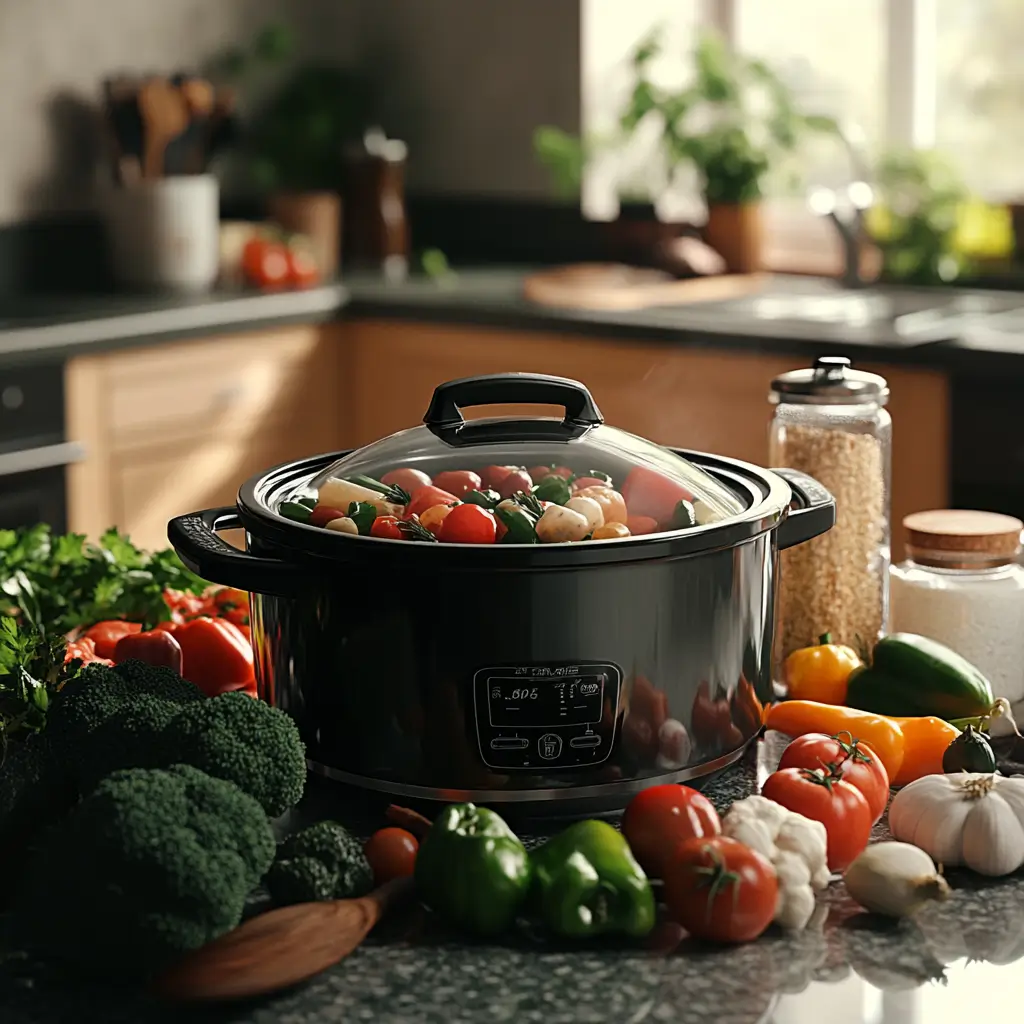Table of Contents
Slow cookers are a beloved kitchen appliance, saving time and effort while creating hearty meals. However, not all vegetables are suited for this cooking method. Some turn bitter, lose their texture, or become overly mushy, ruining the dish. In this guide, we’ll explore what vegetables should not be added to a slow cooker, why they perform poorly, and how to handle them for the best results. Let’s dive into part 1.
Understanding Slow Cooker Limitations with Vegetables
The Science Behind Slow Cooking
Slow cooking uses low, steady heat to break down ingredients over hours. This process works wonders for tenderizing meats and infusing rich flavors into stews, soups, and casseroles. However, delicate vegetables often fail to withstand this extended cooking time. Leafy greens, soft vegetables, and those with high water content can lose their texture, flavor, and nutritional value in the process.
Importance of Vegetable Selection
Choosing the right vegetables for a slow cooker is crucial. Hard, starchy vegetables like carrots and potatoes thrive under these conditions. Conversely, soft or fibrous options may either dissolve into mush or develop an unpleasant bitterness. Learning to work with—or around—these limitations ensures your slow-cooked meals are always a hit.
Pro Tip: Timing is everything! Adding some vegetables later in the cooking process can help preserve their taste and texture.
Vegetables to Avoid in a Slow Cooker
Delicate Vegetables Prone to Overcooking
Certain vegetables are not suited for the extended cooking times of a slow cooker because they are too fragile to withstand prolonged heat. As a result, they tend to overcook, which leads to a loss of structure, flavor, and nutritional value. Furthermore, their delicate nature makes them susceptible to breaking down completely, often turning into an unappealing mush. Therefore, it’s crucial to handle these vegetables carefully and, whenever possible, add them during the final stages of cooking. By doing so, you can preserve their texture, retain their vibrant flavor, and maintain their nutritional benefits in your dish.
Leafy Greens
Leafy greens like spinach and kale are nutrient powerhouses, but their delicate nature makes them unsuitable for slow cookers. They tend to disintegrate, turning your meal into an unappealing mush.
Spinach
Spinach wilts and releases water almost instantly, leaving it overcooked and slimy in slow-cooked dishes. If you love the flavor and nutrition of spinach, add it in the last 10–15 minutes of cooking to retain its bright color and mild taste.
Kale
Kale, while sturdier than spinach, still falls apart under prolonged heat. It becomes chewy and bitter when overcooked. Blanching it beforehand or adding it during the final stages of cooking can preserve its texture and flavor.
Soft Vegetables
Soft vegetables with high water content often overcook and break down entirely in slow cookers. This affects both texture and taste.
Zucchini
Zucchini, while versatile, turns into a soggy mess if slow-cooked too long. Its high water content leaches into the dish, diluting the flavors of other ingredients. Consider sautéing zucchini separately and adding it just before serving.
Tomatoes
Tomatoes are a tricky ingredient for slow cooking. While they contribute excellent flavor, they can break down excessively, leading to a mushy consistency. Opt for using tomato paste or diced tomatoes added later in the cooking process to maintain balance.
Vegetables That Become Bitter
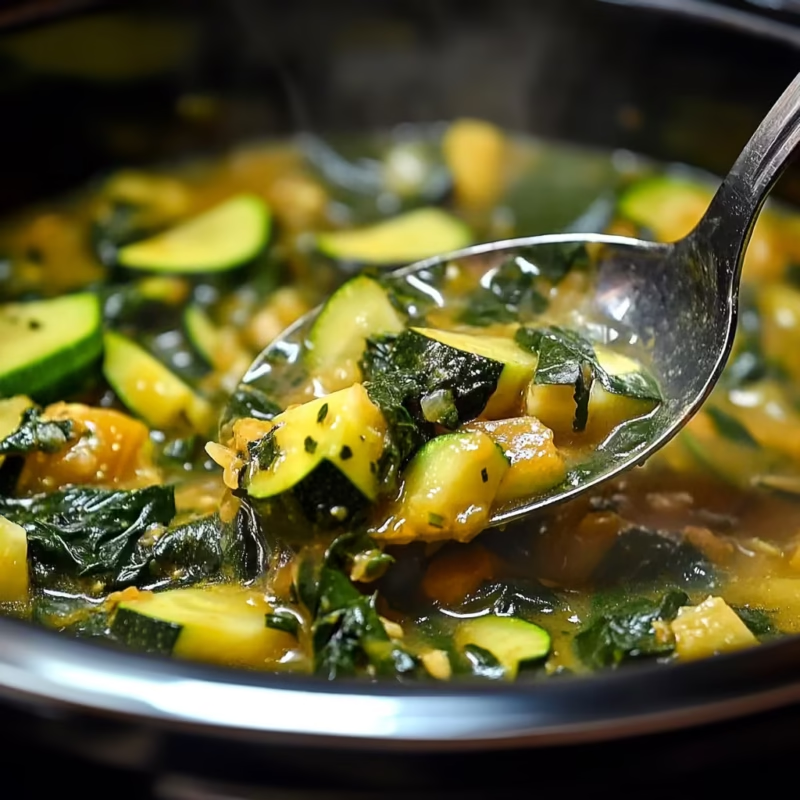
Some vegetables develop bitterness when cooked slowly, altering the dish’s overall taste. Knowing which ones to avoid ensures a well-rounded flavor profile.
Bell Peppers
Bell peppers may seem harmless, but slow cooking can make their natural sweetness turn bitter. Red, yellow, and green peppers are best added towards the end of cooking or pre-sautéed to soften and enhance their natural flavors.
Eggplant
Eggplant’s spongy texture absorbs too much moisture in slow cooking, often becoming bitter and mushy. However, pre-cooking it by grilling or roasting helps reduce bitterness, firm its texture, and add a smoky flavor. As a result, eggplant becomes a better complement to slow-cooked dishes.
Vegetables That Lose Texture and Flavor
Some vegetables lose their vibrant texture and distinct taste when cooked for hours in a slow cooker. They often dissolve, leaving little more than a bland, mushy residue.
Broccoli
Broccoli’s florets break apart under prolonged cooking, becoming overly soft and releasing sulfur compounds that can make the dish smell unappetizing. Steam or blanch broccoli separately, and mix it into your slow cooker meal during the last 10–15 minutes.
Cauliflower
Like broccoli, cauliflower struggles with long cooking times. It disintegrates and loses its subtle, nutty flavor. To prevent this, try roasting cauliflower first for a richer taste and then adding it just before serving.
Nutritional Content of Common Vegetables (Per 100g)
The nutritional value of vegetables varies greatly, and it’s essential to understand their content when incorporating them into slow-cooked dishes. Below is a table highlighting the nutritional profiles of some common vegetables.
| Vegetable | Calories (kcal) | Carbohydrates (g) | Protein (g) | Fats (g) | Fiber (g) | Vitamin C (mg) |
|---|---|---|---|---|---|---|
| Spinach | 23 | 3.6 | 2.9 | 0.4 | 2.2 | 28.1 |
| Kale | 49 | 8.8 | 4.3 | 0.9 | 2.0 | 120 |
| Zucchini | 17 | 3.1 | 1.2 | 0.3 | 1.0 | 17 |
| Tomatoes | 18 | 3.9 | 0.9 | 0.2 | 1.2 | 13.7 |
| Broccoli | 34 | 6.6 | 2.8 | 0.4 | 2.6 | 89.2 |
| Cauliflower | 25 | 5.0 | 1.9 | 0.3 | 2.0 | 48.2 |
Best Practices for Adding Vegetables to a Slow Cooker
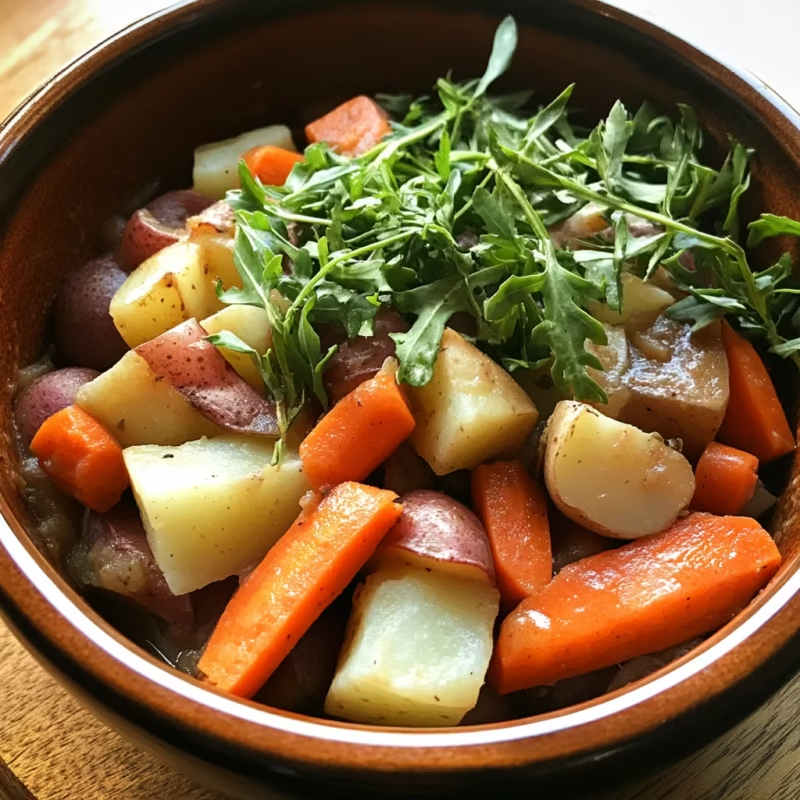
Timing the Addition of Vegetables
Timing is crucial when cooking vegetables in a slow cooker. Adding them at the right stage ensures they retain texture, flavor, and nutrients, while also enhancing the overall quality of the dish.
Early Addition for Root Vegetables
Hard, starchy vegetables such as carrots, potatoes, and parsnips are ideal for slow cooking since they withstand long cooking times without becoming mushy. As they soften, they naturally absorb the rich flavors of the dish.
For best results:
✔ Place root vegetables at the bottom of the slow cooker for even heat distribution.
✔ Chop them uniformly to ensure balanced cooking.
✔ Season early with salt, pepper, or dried herbs to enhance their natural flavors.
Late Addition for Delicate Vegetables
Soft vegetables like spinach, broccoli, and zucchini should be added during the final 15–30 minutes of cooking. This prevents them from overcooking and turning mushy while preserving their vibrant color and fresh taste.
Looking for a vegetable that holds up well in slow cooking? Cabbage is a fantastic option when prepared correctly. Check out Slow Cooker Cabbage Recipes for flavorful and easy ways to cook it in your slow cooker!
Preparation Techniques
Preparation plays a significant role in how vegetables perform in a slow cooker. Properly prepping them ensures they complement your dish rather than detract from it.
Sautéing Before Adding
Sautéing vegetables such as onions, garlic, and bell peppers before adding them to the slow cooker brings out their natural sweetness and intensifies their flavors. This method caramelizes their surfaces, adding a savory depth that slow cooking alone can’t achieve.
Additionally, sautéing removes excess moisture from watery vegetables like zucchini, helping to control the liquid balance in your dish. Use olive oil or a light spray of non-stick cooking oil to enhance the caramelization process.
Blanching Delicate Vegetables
Blanching involves briefly boiling vegetables like broccoli, kale, or cauliflower before adding them to the slow cooker. This method locks in their vibrant color and firm texture, preventing them from overcooking. After blanching, plunge the vegetables into ice water to stop the cooking process and preserve their crunch.
This extra step might seem tedious, but it’s a game-changer for achieving restaurant-quality results with slow-cooked dishes. Your vegetables will not only taste better but also look more appetizing.
Frequently Asked Questions
Can I add frozen vegetables to the slow cooker?
Yes, frozen vegetables can be added to a slow cooker, but there are some considerations. Since frozen veggies release water as they thaw, they can dilute the dish’s flavor or throw off the texture if too many are added. To avoid this, thaw and drain frozen vegetables beforehand. Additionally, they cook faster than fresh vegetables, so add them in the last 30 minutes to an hour to prevent them from becoming mushy.
How do I prevent vegetables from becoming mushy?
To prevent vegetables from overcooking, timing and preparation are key. For hard vegetables like carrots and potatoes, add them at the beginning of the cooking process, but for delicate options such as zucchini or broccoli, introduce them towards the end. Cutting vegetables into larger pieces also helps maintain their structure. Techniques like sautéing or blanching can further enhance their texture, reducing the likelihood of a mushy outcome.
Is it safe to cook beans in a slow cooker?
Cooking beans in a slow cooker is safe, but you need to take precautions. Raw beans, especially kidney beans, contain lectins, which can cause digestive discomfort if not cooked thoroughly. To ensure safety, soak beans overnight and boil them for at least 10 minutes before adding them to the slow cooker. This process neutralizes toxins and guarantees tender, delicious beans in your dish.
What Vegetables Are Best Suited for Slow Cooking?
Root vegetables like carrots, potatoes, and parsnips are perfect for slow cooking because they hold their texture during long cooking times. They absorb rich flavors from the dish, enhancing its overall taste. Other great options include butternut squash, turnips, and sweet potatoes, which add hearty, earthy richness to stews and soups. For best results, layer these vegetables at the bottom of the slow cooker to ensure even cooking and maximum flavor absorption.
How can I enhance the flavor of vegetables in a slow cooker?
To enhance the flavor of slow-cooked vegetables, sauté aromatic ingredients like onions and garlic first to build depth. Adding fresh herbs, spices, or a splash of citrus juice at the end creates a zesty finish. Additionally, layer hard vegetables at the bottom and softer ones on top for balanced flavors and textures.
Should I adjust cooking times for high-altitude areas?
Yes, high-altitude areas require adjustments to slow cooking times. At higher altitudes, water boils at a lower temperature, so food may take longer to cook. To compensate, increase the cooking time by 30 minutes to an hour, or use the high-heat setting on your slow cooker. You may also need to add a little extra liquid to prevent the dish from drying out.
Mastering Vegetable Use in Slow Cooking
Summary of Key Points
Understanding what vegetables should not be added to a slow cooker is essential for creating delicious, well-balanced meals. Delicate vegetables like spinach and kale, soft options such as zucchini and tomatoes, and those prone to bitterness like bell peppers and eggplant should be handled with care. Timing is crucial—root vegetables thrive with long cooking, while softer varieties are best added near the end. Preparation techniques like sautéing and blanching can preserve texture and flavor. With these practices in mind, your slow-cooked dishes will always shine.
Encouragement to Experiment Safely
Although slow cookers have certain limitations, they shouldn’t discourage you from experimenting with a variety of vegetables in your recipes. In fact, by following the guidelines shared in this article, you can transform even simple ingredients into culinary masterpieces. For instance, adding your vegetables thoughtfully, layering flavors strategically, and employing preparation techniques such as sautéing or blanching can significantly enhance the outcome of your dishes.
Moreover, cooking is a creative process, so don’t be afraid to try new vegetable combinations or methods to suit your preferences. Whether you’re blending hearty root vegetables with savory seasonings or introducing delicate greens late in the cooking process, each step allows room for exploration. With consistent practice and a bit of trial and error, you’ll soon master the art of slow cooking, creating meals that are both flavorful and nutritious.
Most importantly, take the time to enjoy the journey and embrace the versatility of your slow cooker. After all, it can become your secret weapon for crafting effortless, crowd-pleasing meals that bring satisfaction and delight to the table every time!
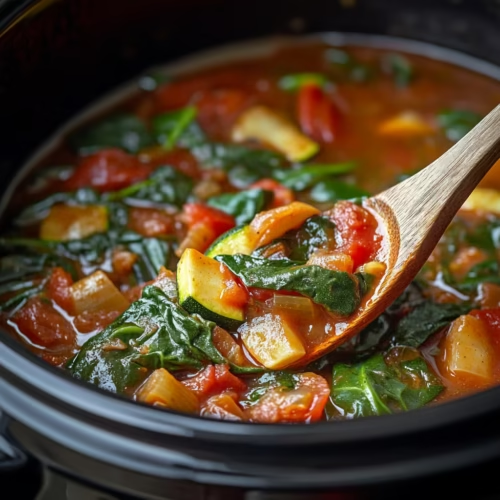
Vegetables to Avoid in a Slow Cooker
Equipment
- Slow Cooker
Ingredients
Delicate Vegetables Prone to Overcooking
- 1 cup Spinach Wilts quickly and becomes mushy in a slow cooker.
- 1 cup Kale Turns chewy and bitter when cooked too long.
Soft Vegetables That Lose Texture
- 1 cup Zucchini High water content makes it soggy and breaks down too much.
- 1 cup Tomatoes Breaks down excessively, turning into a watery mess.
Vegetables That Become Bitter
- 1 cup Bell Peppers Slow cooking can turn their natural sweetness into bitterness.
- 1 cup Eggplant Absorbs too much moisture and develops a bitter taste.
Cruciferous Vegetables That Lose Flavor
- 1 cup Broccoli Breaks apart and releases sulfur compounds, affecting the flavor.
- 1 cup Cauliflower Disintegrates and loses its nutty flavor when slow-cooked.
Instructions
- Identify vegetables that do not hold up well in a slow cooker, such as leafy greens, soft vegetables, and bitter varieties.
- For better results, add delicate vegetables like spinach or kale in the last 10–15 minutes of cooking.
- To avoid bitterness, sauté bell peppers and eggplant before adding them to a slow cooker.
- Steam or blanch broccoli and cauliflower separately, then mix them into your slow-cooked dish during the last 10–15 minutes.
- For the best texture, place root vegetables like carrots and potatoes at the bottom of the slow cooker.

